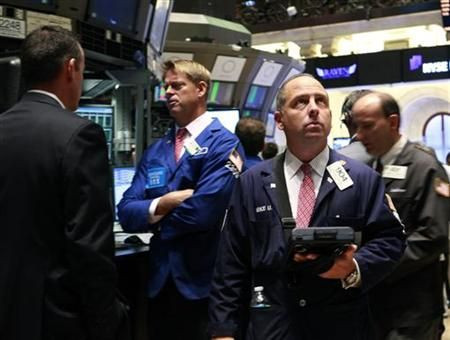Why U.S. stocks can go up in 2011

The health of the American economy and the level of accommodation in monetary policy are the two most important factors that influence U.S. stock price movements.
In fact, David Tepper, the highest paid hedge fund manager in 2009, suggested during a CNBC interview that either one alone can drive stocks up.
In 2011, it seems U.S. equities may get support both.
There are signs that the economy is improving.
For October, non-farm payrolls gain surprised to the upside by showing an addition of 151,000 jobs. The recent ADP jobs report, the weekly initial claims reports, and the ISM reports (measures of business activities) are all bullish and point to a relatively robust report for November's non-farm payrolls, said Marc Chandler, the head of Global Currency Strategy at Brown Brothers Harriman.
He said that the recent Federal Reserve Beige Book, auto sales data, and U.S. chain store sales data are also positive.
These nascent signs of an accelerating economic recovery are probably not the result of government stimulus measures (which are gradually being withdrawn), but instead arise organically from the private sector.
This uptrend, then, could be self-sustaining and feed upon virtuous cycles of increased employment, consumer spending, lending conditions, and asset prices.
Why is the economy improving?
Economists are somewhat puzzled and don't agree on the cause.
The highly respected Jan Haztius, chief U.S. economist of Goldman Sachs, said his best explanation is that the pace of private-sector deleveraging is slowing in an environment of somewhat lower debt/income ratios, improving credit quality and moderating lending standards.
Another reason could be the gridlock in Congress, which arguably prevents Democrats from enacting allegedly anti-business policies in the areas of taxes, health care, public debt, and financial reform.
Also, Republicans can sabotage the implementation of allegedly anti-business policies that Democrats already passed.
Monetary policies also seem to support higher stock prices.
When the Federal Reserve hinted that it will conduct a second round of quantitative easing (QE2) back in September, the markets cheered. On November 3, it formally announced plans to purchase $600 billion in Treasuries by the second quarter of 2011.
However, the Fed said it will review the pace of its securities purchases and the overall size of the asset-purchase program in light of how the economy performs.
Because of this clause, the market began to fear that the Fed will not use all of the allotted $600 billion for QE2.
Then, later in November, various Fed officials made a flurry of media appearances and basically assured the market that they are very likely to carry out all of QE2 and are even open to a third round of quantitative easing if the economy does not improve.
After this, the market's fear about the shrinking of QE2 subsided.
Just how far will QE2 and economic growth lift U.S. stocks?
Haztius' forecast for the S&P 500 Index is 1,450 by the end of 2011, up from the current level of 1,220.
However, assuming that the market does indeed rally in 2011 -- and the economy improves as well -- an ensuing multi-year bull market is not guaranteed.
One, the rally could a short-lived bubble fueled by QE2 ( a view espoused by legendary investor Jeremy Grantham).
Two, the improvement in the economy and stocks could just be a cyclical uptrend within a secular downtrend because there are still serious structural headwinds to long-term U.S. economic recovery. This is the view of the The Jerome Levy Forecasting Center.
Email Hao Li at hao.li@ibtimes.com
© Copyright IBTimes 2025. All rights reserved.





















